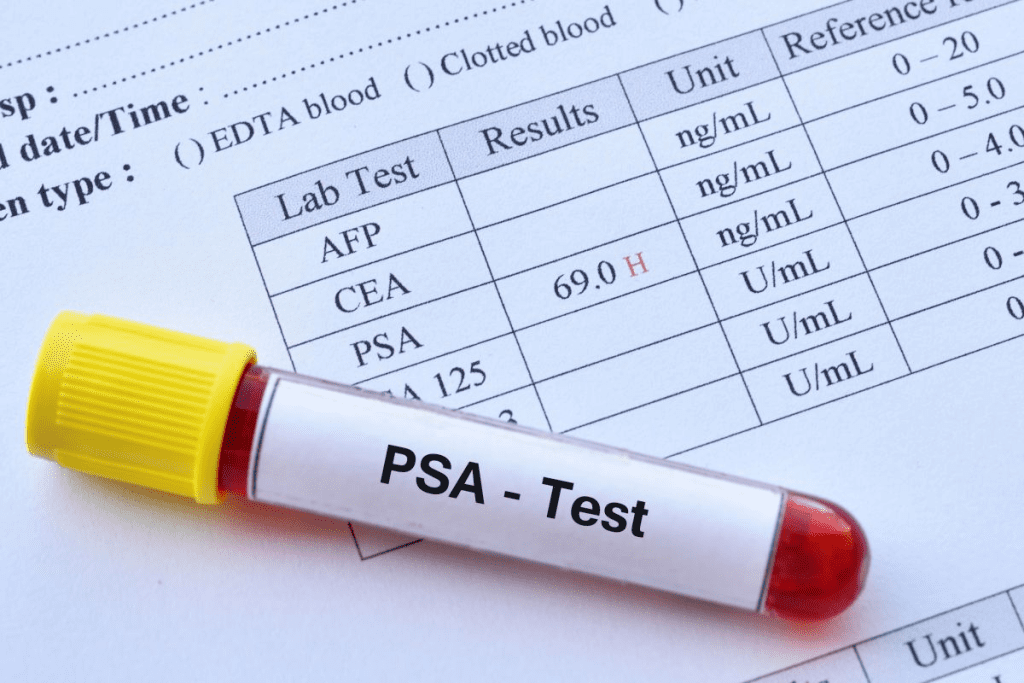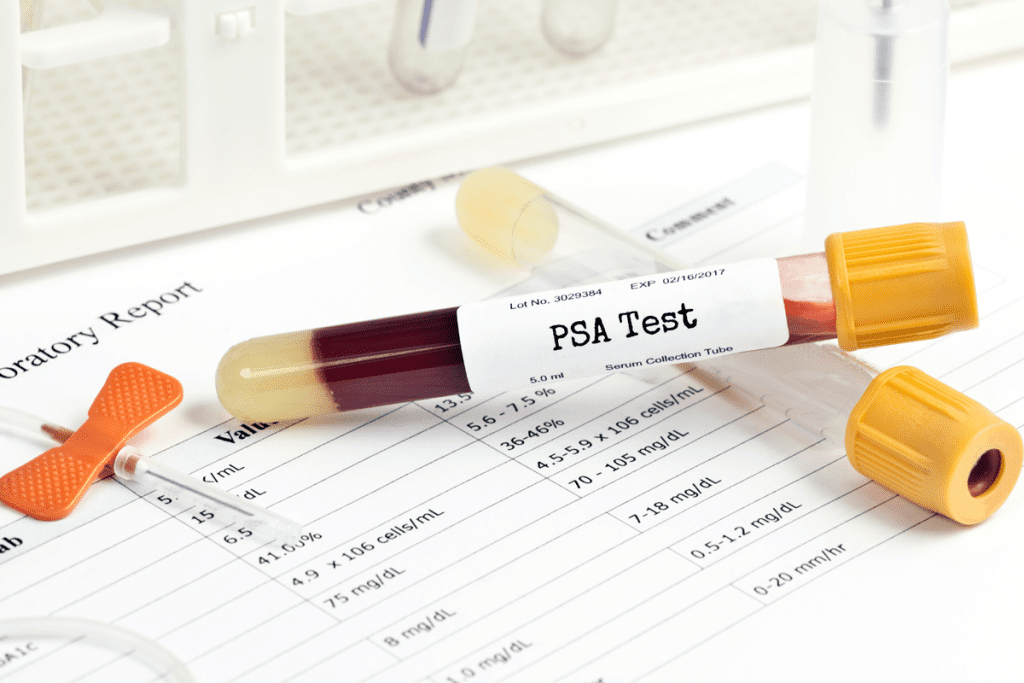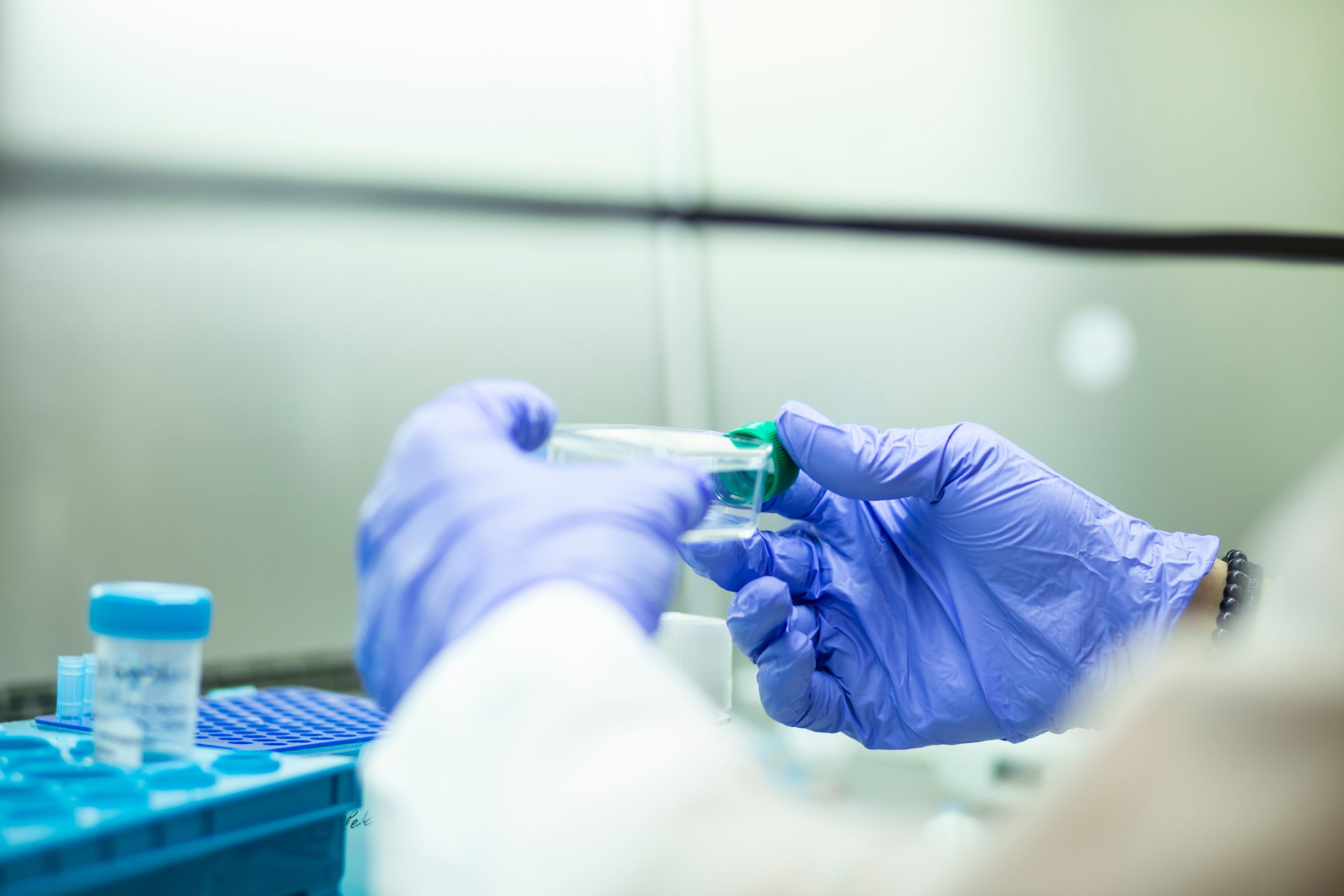Last Updated on November 26, 2025 by Bilal Hasdemir

These surprising factors affecting PSA test results are essential to know. Get the shocking truths before your screening for an accurate reading.
Prostate health is key for men’s overall health. Prostate-specific antigen (PSA) tests help find and track problems early.
Did you know over 1 million men in the U.S. get prostate biopsies yearly? This is often because their PSA levels are too high. It shows how important it is to know what affects PSA test results.
We’ll look into how things like ejaculation can change PSA levels. We’ll see what this means for men’s health.
Key Takeaways
- PSA tests are key for watching prostate health.
- High PSA levels can mean different prostate problems.
- Knowing what affects PSA tests is vital for right diagnosis.
- Ejaculation is one thing that can change PSA levels.
- Understanding PSA test results well needs a lot of knowledge.
The Basics of PSA and Prostate Health
To understand PSA test results, knowing what PSA is key. Prostate-Specific Antigen (PSA) is a protein made by the prostate gland. Its levels in the blood tell us a lot about prostate health.
What is Prostate-Specific Antigen (PSA)?
PSA is a protein mainly made by the prostate gland. High PSA levels in the blood can mean prostate problems, like cancer or BPH. The PSA test checks PSA levels in the blood. This helps doctors check prostate health.
Normal PSA Ranges and Variations
Normal PSA levels are usually between 0 and 4 ng/mL. But, age, race, and other factors can change this. A PSA level under 4 ng/mL is usually okay. Levels between 4 and 10 ng/mL might need more checking.
PSA levels can also change for many reasons. This includes getting older or having certain medical tests.
| Age Group | Typical PSA Range (ng/mL) |
| 40-49 | 0-2.5 |
| 50-59 | 0-3.5 |
| 60-69 | 0-4.5 |
| 70+ | 0-6.5 |
How Ejaculation Affects PSA Levels
It’s important to know how ejaculation impacts PSA levels for prostate health checks. Studies show that ejaculation can briefly change PSA test results. This is something men should think about when they get prostate screenings.
The Physiological Mechanism
The way ejaculation affects PSA levels involves the prostate gland. When you ejaculate, the prostate gland gets stimulated. This can release more prostate-specific antigen into your blood. This increase might make your PSA levels seem higher in tests later on.
Temporary PSA Elevation After Sexual Activity
Research finds that PSA levels can go up after ejaculation. This rise is usually short, going back to normal in a few days. How long it takes can differ based on your prostate health and how often you ejaculate.
The table below shows how ejaculation might affect PSA levels:
| Activity | Effect on PSA Levels | Duration of Effect |
| Ejaculation | Temporary Increase | 24-48 hours |
| Prostate Stimulation | Potential Increase | Varies |
| Sexual Activity without Ejaculation | Minimal Effect | – |
Men should talk to their doctor about their sexual activity before a PSA test. This helps make sure the test results are accurate.
The Timeline: Duration of PSA Changes After Ejaculation

Ejaculation can temporarily change PSA levels. Knowing how long these changes last is key for accurate test results. We’ll look at how long PSA levels stay affected after ejaculation and when they usually go back to normal.
Immediate Effects (24-48 Hours)
Research shows PSA levels can jump right after ejaculation. This jump usually happens within 24 to 48 hours. Most studies agree that this increase is short-lived and goes away by itself.
Key findings on immediate PSA elevation:
- PSA levels can increase a lot within 24 hours after ejaculation.
- The rise isn’t the same for everyone, depending on several factors.
- Most people see their levels go back to normal in a few days.
Return to Baseline Measurements
After the initial spike, PSA levels usually go back to normal. How long this takes can vary. But most studies say PSA levels get back to normal in 48 to 72 hours after ejaculation.
Timeline for return to baseline:
| Timeframe | PSA Level Status |
| 0-24 hours | Potential increase |
| 24-48 hours | Peak elevation |
| 48-72 hours | Return to baseline |
Knowing when PSA levels return to normal after ejaculation is important for prostate cancer screening. By understanding when PSA levels are likely to return to normal, men can prepare better for their PSA tests. This helps get more accurate results.
Recommended Abstinence Before PSA Testing

Getting accurate PSA test results is important. Sexual activity can affect the Prostate-Specific Antigen (PSA) in your blood. Knowing how long to avoid sex before the test is key.
Medical Guidelines for Sexual Activity
Doctors say men should not ejaculate for a few days before a PSA test. This period is usually 48 to 72 hours. It helps keep PSA levels steady.
Sticking to these guidelines is vital. Recent ejaculation can make PSA levels seem off. This could cause worry or false peace of mind.
Why Timing Matters for Accurate Results
When you have sex, your PSA levels might go up. But this spike is short-lived. Waiting 48 to 72 hours before the test gives a clearer picture of your prostate health.
- Abstinence from sexual activity for 48 to 72 hours before the test is recommended.
- Ejaculation can temporarily elevate PSA levels.
- Following guidelines ensures more accurate test results.
By following these tips, men can get reliable PSA test results. This gives a better understanding of their prostate health.
Factors Affecting PSA Test Results
Knowing what affects PSA test results is key for checking prostate health. Many things can change PSA levels. Knowing these can help men and doctors make better choices for prostate health.
Physical Activities and Exercise
Being active is good for health, but some exercises can raise PSA levels. Studies show that hard activities like cycling or horseback riding can slightly raise PSA levels because of prostate pressure. But these changes usually go back to normal in a few days.
Regular, gentle exercise is good for health and might keep PSA levels healthy. Exercise can lower inflammation and boost the immune system, both good for the prostate. So, while some activities might raise PSA levels, a good exercise plan is usually a good thing.
Medications and Supplements
Some medicines and supplements can change PSA test results. For example, 5-alpha-reductase inhibitors, used for BPH, can lower PSA levels. Men taking these should tell their doctor, as it can change how PSA results are seen.
Some supplements might also change PSA levels, but the proof is not always clear. Men thinking about supplements for prostate health should talk to their doctor about how they might affect PSA levels. It’s important to think about the good and bad of any supplement or medicine for prostate health.
Medical Procedures and Examinations
Prostate-related medical procedures can also change PSA test results. Things like prostate biopsy, cystoscopy, or DRE can raise PSA levels temporarily. It’s important to know when these procedures happen before a PSA test. Doctors often suggest waiting a bit after these procedures before getting a PSA test.
Knowing how these factors affect PSA test results helps men get ready for tests and understand their results better. By looking at lifestyle, medicines, and medical history, doctors can give better advice and care for prostate health.
Prostate Conditions That Elevate PSA Levels
Knowing how prostate conditions affect PSA levels is key for the right diagnosis and treatment. Some prostate issues can raise PSA levels. It’s important to know about these conditions.
Benign Prostatic Hyperplasia (BPH)
BPH is a non-cancerous growth of the prostate gland. It’s common in older men and can raise PSA levels. The PSA increase depends on the prostate’s size and how much it’s grown.
Key points about BPH and PSA levels:
- BPH can cause a mild to moderate increase in PSA levels.
- The larger the prostate, the higher the PSA level is likely to be.
- BPH is not a direct precursor to prostate cancer, but it can complicate the interpretation of PSA test results.
Prostatitis and Inflammation
Prostatitis is inflammation of the prostate gland, often due to infection. It can also raise PSA levels. The inflammation makes the prostate release more PSA into the blood, leading to higher test results.
Types of prostatitis that can affect PSA levels:
- Acute bacterial prostatitis: This is a bacterial infection that can cause significant inflammation and a substantial rise in PSA levels.
- Chronic prostatitis/chronic pelvic pain syndrome: This condition can cause persistent inflammation and potentially elevate PSA levels.
Prostate Cancer Correlation
BPH and prostatitis can raise PSA levels, but prostate cancer is more serious. It also raises PSA levels. Not all men with high PSA have cancer, though.
The Correlation Between Psa Levels And Prostate Cancer Risk:
| PSA Level (ng/mL) | Prostate Cancer Risk |
| 0-2.5 | Low risk |
| 2.6-4 | Moderate risk |
| 4-10 | Higher risk |
| >10 | High risk |
PSA testing is useful for screening prostate cancer, but it’s not definitive. More tests, like biopsies, are often needed to confirm a diagnosis.
Age-Related Changes in PSA Levels
It’s important to know how age affects PSA levels. This helps us understand PSA test results better. As men get older, their prostate gland changes, which can affect PSA levels.
PSA Ranges by Age Group
PSA levels change with age. They usually go up as men get older, even without prostate cancer. Here are some PSA ranges for different age groups:
- For men between 40-49 years, a PSA level below 2.5 ng/mL is considered normal.
- Men between 50-59 years are typically considered to have a normal PSA level if it’s below 3.5 ng/mL.
- For those aged 60-69, a PSA level below 4.5 ng/mL is generally viewed as normal.
- Men over 70 years may have a slightly higher normal range, often considered up to 6.5 ng/mL.
These are general guidelines. What’s considered normal can vary between labs and individual health.
Natural Age-Related Prostate Growth
One big factor in PSA levels with age is the prostate’s natural growth. This is called Benign Prostatic Hyperplasia (BPH). As the prostate gets bigger, it can make more PSA, leading to higher levels. This growth is common in older men and can make it harder to understand PSA test results.
When looking at PSA levels, age is very important. For example, a PSA level that might worry a younger man might be okay for an older man due to age-related prostate changes.
Key considerations include:
- The need for age-specific PSA ranges.
- The impact of BPH on PSA levels.
- The importance of discussing PSA results in the context of overall prostate health.
Understanding these age-related changes helps doctors better understand PSA test results. This leads to better decisions about further testing or treatment.
Understanding PSA Test Accuracy
Knowing how accurate PSA tests are is key for men to take care of their prostate health. The Prostate-Specific Antigen (PSA) test is a common tool for finding prostate cancer. But, it’s not 100% reliable.
There are things that can make PSA test results not always right. False positives and false negatives are big concerns. They can really affect how patients feel and what care they get.
False Positives: Causes and Frequency
A false positive means the test shows high PSA levels, but there’s no cancer or big issues. Many things can cause this, like:
- Recent Ejaculation: Ejaculation can make PSA levels go up.
- Prostatitis or Prostate Inflammation: Infections or inflammation can raise PSA levels.
- Benign Prostatic Hyperplasia (BPH): BPH, common in older men, can also raise PSA levels.
- Recent Prostate Procedures: Some medical procedures can affect PSA levels.
Research shows false positive rates for PSA tests can be as high as 80% in some groups. This shows we need to be careful when looking at test results.
False Negatives: Limitations of Testing
A false negative means the test shows normal levels, but there’s cancer. This can make people feel safe when they shouldn’t. It can also delay finding and treating cancer.
False negatives happen for a few reasons, like:
- Slow-Growing Tumors: Some cancers don’t make enough PSA to show up in tests.
- Test Sensitivity: The test’s ability to find tumors can vary.
- Individual Variability: People’s PSA levels can vary a lot, affecting test accuracy.
Knowing these limits is important for doctors and patients when looking at PSA test results.
By understanding the risks of false positives and negatives, we can better handle PSA testing. This helps us make smarter choices about our prostate health.
PSA Testing Protocols and Best Practices
Knowing the best ways to do PSA tests is key to good prostate health. As we improve our prostate cancer screening, keeping up with new guidelines is vital.
Current Screening Guidelines
Guidelines for PSA tests differ among groups, but most suggest a team effort. The American Urological Association (AUA) and the American Cancer Society (ACS) offer guidance. They help doctors decide who should get tested and how often.
The AUA says men aged 55 to 69 should talk to their doctor about PSA tests. For those younger or older, the decision depends on their health and risk factors.
Risk-Based Testing Approaches
Using risk-based testing is getting more attention in prostate cancer screening. Doctors look at factors like family history, ethnicity, and genetics. This helps them decide if and how often to test.
| Risk Factor | Impact on PSA Testing | Recommended Approach |
| Family History of Prostate Cancer | Increases risk, potentially warranting earlier or more frequent testing | Discuss with healthcare provider about starting screening earlier |
| African American Ethnicity | Higher risk of developing prostate cancer | Consider earlier screening and more frequent monitoring |
| Genetic Markers (e.g., BRCA1 and BRCA2) | May increase risk, potentially influencing testing frequency | Genetic counseling and personalized screening plan |
By focusing on risk in PSA testing, we can make screening more personal. This could lead to better results and less harm from unnecessary tests.
When to Retest After an Elevated PSA Result
When a PSA test shows a high result, figuring out when to retest is key. This step is important for getting a correct diagnosis and avoiding extra tests.
Getting a high PSA result can worry you. So, it’s vital to stick to the right follow-up testing schedule. This helps reduce stress and makes sure future tests are accurate.
Follow-up Testing Timelines
Most guidelines say to recheck PSA levels after a while if the first test was high. The American Urological Association advises checking again 6-12 weeks later. This wait lets any short-term changes settle, giving a clearer reading.
While waiting, try to avoid things that might raise your PSA, like some medical tests or sex. This helps make sure your retest is as reliable as it can be.
Considerations for Retesting After Sexual Activity
Sex can affect PSA levels, as we’ve talked about before. So, before your retest, it’s wise to not have sex for a bit. Usually, waiting 48 to 72 hours is recommended to avoid any PSA level changes.
Keep in mind, how sex affects PSA can differ for everyone. Always talk to your doctor about any worries or questions. They can give advice tailored to your needs and health history.
Knowing when to retest and how sex might affect it helps you manage your prostate health better. This knowledge lets you take charge of your health.
Advanced PSA Testing Methods
Advanced PSA testing methods give a deeper look at prostate-specific antigen levels. This helps doctors make more precise diagnoses and create better treatment plans.
Free vs. Total PSA Ratio
The free vs. total PSA ratio is a big step in PSA testing. PSA is found in two forms in the blood: free PSA and complexed PSA (bound to proteins). The ratio between these forms gives more insight into prostate cancer risk. A lower free PSA percentage means a higher cancer risk.
Clinical Utility: This ratio is very helpful for men with a total PSA level between 4 and 10 ng/mL. It helps decide if a biopsy is needed, which can lower the number of unnecessary procedures.
PSA Density Measurements
PSA density is another advanced test that considers the prostate gland’s volume. It’s found by dividing the total PSA level by the prostate volume, in cubic centimeters (cc). A higher PSA density means a higher cancer risk, as it shows more PSA for the prostate size.
Diagnostic Precision: PSA density helps make diagnoses more precise, mainly for men with bigger prostates. It helps tell apart PSA increases from BPH and prostate cancer.
Using these advanced PSA testing methods in clinics can make prostate cancer detection more accurate. This can also lower the number of unnecessary biopsies and treatments. These methods are a big step forward in managing prostate health.
Natural Ways to Support Healthy PSA Levels
Keeping PSA levels healthy is key for prostate health. There are many natural ways to do this. A healthy lifestyle can help a lot.
Dietary Considerations for Prostate Health
Eating lots of fruits, veggies, and whole grains is good for your prostate. Some foods are extra helpful:
- Tomatoes and Tomatillos: They’re full of lycopene, which might lower cancer risk.
- Berries: They’re packed with antioxidants and vitamins for health.
- Green Tea: It has catechins, which might fight cancer.
- Fatty Fish: They’re full of omega-3s, which fight inflammation.
It’s also smart to avoid foods high in saturated fats and processed meats. They can harm your prostate.
Lifestyle Modifications
Changing your lifestyle can also help your PSA levels. Exercise regularly, stay at a healthy weight, and don’t smoke. Stress management, like meditation or yoga, is also good for you.
| Lifestyle Modification | Potential Benefit |
| Regular Exercise | Reduces inflammation and improves overall health |
| Healthy Weight Management | Reduces the risk of various health conditions, including prostate issues |
| Stress Management | May help reduce the risk of prostate problems by minimizing chronic stress |
Evidence-Based Supplements
While diet and lifestyle are important, some supplements can also help. Always talk to a doctor before taking any supplements. Some good ones include:
- Saw Palmetto: It might help with BPH symptoms.
- Zinc: It’s vital for prostate health and immune function.
- Vitamin D: It’s good for health and might lower cancer risk.
By using these natural methods, you can help keep your PSA levels healthy. This is good for your prostate overall.
Discussing PSA Results with Your Healthcare Provider
When you get your PSA test results, talking to your healthcare provider is key. Your PSA results are just one part of the picture. They help your doctor understand your health better when combined with other information.
Conclusion
We’ve looked at what affects Prostate-Specific Antigen (PSA) test results. This includes how ejaculation, age, and other health issues play a role. Knowing these factors is key for accurate prostate cancer screening and keeping the prostate healthy.
PSA test results can be influenced by many things. This includes short-term increases from sexual activity and long-term changes from conditions like BPH or cancer. Understanding these can help people better understand their PSA levels and make smart health choices.
Prostate health is very important for men, and regular PSA tests help keep an eye on it. Knowing what can change PSA levels helps men take care of their prostate health better.
We suggest talking to your doctor about your PSA test results. Ask questions and understand your results in the context of your overall health. This teamwork helps deepen your understanding of prostate health and supports effective cancer screening.
FAQ
Does ejaculating before a PSA test affect the results?
Yes, ejaculating before a PSA test can raise PSA levels. This might make test results not accurate. It’s best to avoid sex for at least 48 hours before the test.
What is a normal PSA level?
Normal PSA levels change with age. Generally, a PSA under 4 ng/mL is normal. But, other health factors like age and prostate size also matter when looking at PSA results.
How long does it take for PSA levels to return to normal after ejaculation?
PSA levels usually go back to normal in 24 to 48 hours after ejaculation. But, this can vary from person to person.
Can exercise affect PSA test results?
Yes, some exercises like cycling can raise PSA levels. Avoid hard activities for a few days before your test.
What are the current guidelines for PSA screening?
Guidelines suggest talking to a doctor about PSA tests starting at age 50 for most people. If you’re at higher risk, like African Americans or those with a family history, you might start earlier.
Can medications affect PSA test results?
Yes, some meds like finasteride can lower PSA levels. Always tell your doctor about any meds or supplements before a PSA test.
What is the difference between free and total PSA?
The free PSA test shows the free PSA to total PSA ratio. A higher ratio might mean lower cancer risk. A lower ratio could mean higher risk.
How can I support healthy PSA levels naturally?
Eating well, exercising, and managing stress can help prostate health. Supplements like saw palmetto and omega-3 fatty acids might also help.
What questions should I ask my healthcare provider about PSA results?
Ask your doctor about what your results mean, if more tests are needed, and any lifestyle changes or treatments.
Can prostatitis cause elevated PSA levels?
Yes, prostatitis can raise PSA levels. Treating the inflammation can help get PSA levels back to normal.
How does age affect PSA levels?
PSA levels go up with age as the prostate grows. Knowing age-specific PSA ranges helps doctors understand test results better.
Reference
- American Urological Association. (2018). Prostate cancer early detection guidelines: PSA testing recommendations. https://pubmed.ncbi.nlm.nih.gov/30185521/






